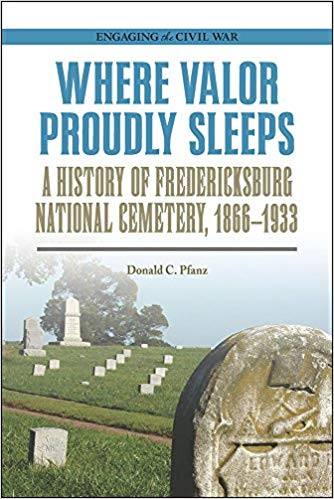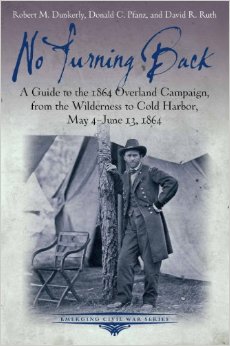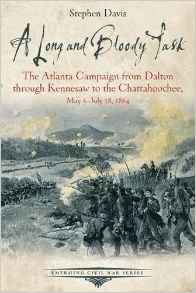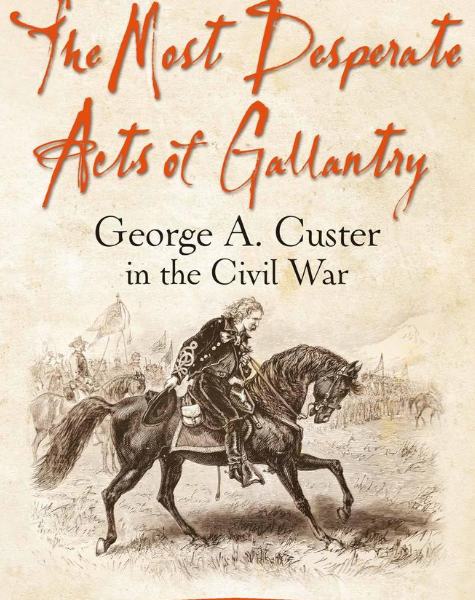Where Valor Proudly Sleeps: A History of Fredericksburg National Cemetery, 1866-1933 by Donald C. Pfanz. Engaging the Civil War Series at Southern Illinois University Press, 2018. Paper, ISBN: 978-0809336456. $26.50.
 Today, the Fredericksburg National Cemetery looms large over the city of Fredericksburg. Visitors to the Fredericksburg Battlefield will note that the cemetery is one of the most prominent features of the Sunken Road area. Graves crest Marye’s Heights, and Union soldiers now occupy the land they could not reach in December 1862. Composed of more than 15,000 graves, Fredericksburg became the final resting place of Union fallen from the Battle of Fredericksburg, Chancellorsville, Mine Run, the Wilderness, Spotsylvania Court House, and North Anna.
Today, the Fredericksburg National Cemetery looms large over the city of Fredericksburg. Visitors to the Fredericksburg Battlefield will note that the cemetery is one of the most prominent features of the Sunken Road area. Graves crest Marye’s Heights, and Union soldiers now occupy the land they could not reach in December 1862. Composed of more than 15,000 graves, Fredericksburg became the final resting place of Union fallen from the Battle of Fredericksburg, Chancellorsville, Mine Run, the Wilderness, Spotsylvania Court House, and North Anna.
“What do the numbers mean?” is among the most sobering questions a visitor might have while wandering the Fredericksburg National Cemetery. It is an understandable query; most gravestones consist of short, small blocks that bear only two numbers and no names. One number simply marks the plot in the cemetery; the other number, which can reach as high as twelve, notes how many soldiers are interred in that grave. Fredericksburg National Cemetery bears the unfortunate distinction of having one of the lowest percentages of identified graves in the National Cemetery system. A consequence of the chaotic nature with which the National Cemetery system developed during the Civil War as well as a lack of standardized methods for identifying the fallen, the anonymity of Fredericksburg’s dead is striking, but not surprising. Despite these difficulties, Don Pfanz has traced the life of the cemetery from its inception during the war through its adoption into the National Park Service. In doing so, Pfanz takes on the burden of piecing together fragments of information to establish a cohesive history of this important place as well as tell the stories of those who rest there.
A growing number of historians have shifted their efforts in studying the Civil War to understanding what happened when the bugles stopped playing and the cannons grew quiet. As historian Drew Gilpin Faust reminded readers in her 2008 work This Republic of Suffering: Death and the American Civil War, the United States struggled to confront the magnitude of death wrought by the war. Pfanz continues these efforts by focusing on a particular cemetery and tracing how federal policy developed not just to inter the dead, but also to decide how best to remember and honor the nation’s collective sacrifice. The standard brick walls, superintendent’s quarters, and uniform headstones that visitors encounter today all evolved over time as policymakers attempted to bury the dead, reunify the country, and help the living grieve.
Pfanz draws on years of meticulous research he conducted while a historian at Fredericksburg and Spotsylvania National Military Park. Where Valor Proudly Sleeps combines records from the Quartermaster General, personal correspondence and diaries, newspaper articles, and a variety of other primary sources to present the most comprehensive narrative possible. As Pfanz makes clear throughout his text, while he has labored to answer as many questions about the cemetery’s development as possible, much remains unknown. This, Pfanz demonstrates, is a testimony to the haphazard way that National Cemeteries grew after the war.
This book is not, however, only a history of death. Pfanz has taken great care to illuminate the lives of those who labored in the cemetery. He highlights cemetery superintendents, often wounded Union veterans who maintained the cemetery and assisted the many visitors who came looking for their loved ones’ final resting place. Additionally, he describes the history of commemorative practices in the National Cemetery. Most notably, Pfanz explains how African-American citizens led early Memorial Day ceremonies at Fredericksburg, complete with parades and speeches that celebrated emancipation and the extension of citizenship. However, in later years, white citizens excluded their black neighbors in order to appease Confederate veterans who wanted to take part in ceremonies at the National Cemetery. These chapters effectively remind readers that National Cemeteries have remained important sites for the living that warrant scholars’ continued attention.
Though focused on a single National Cemetery, Where Valor Proudly Sleeps is also a history of how Americans remember sacrifice and continue to struggle with the legacies of the Civil War. As such, it is a useful book not only for those interested in learning about the Fredericksburg area, but for anyone hoping to glimpse the origins of the National Cemetery system and how the United States has honored the sacrifice of its soldiers. For scholars interested in questions of material culture, Pfanz’s meticulous administrative history of the physical development of the cemetery is a wealth of information. It should also prompt visitors to the Fredericksburg Battlefield to stay a little longer in the cemetery and consider the many stories that it has to tell.
Rebecca Capobianco is pursuing her Ph.D. in History at The College of William & Mary.




